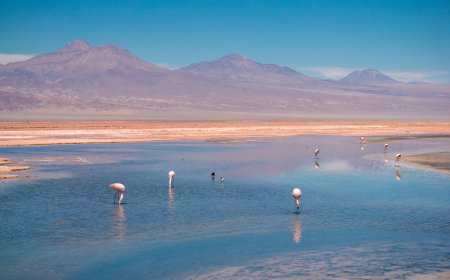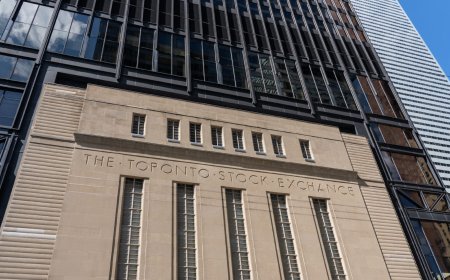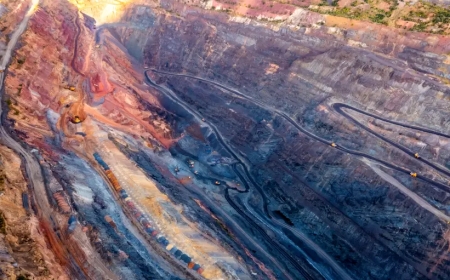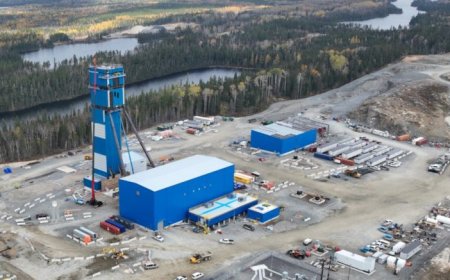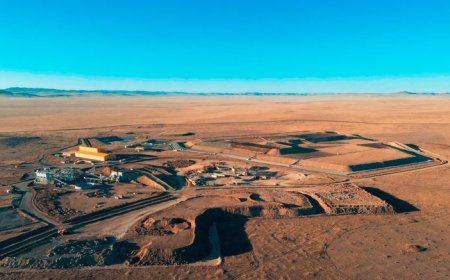The Canadian Mining Hall of Fame announces five new inductees
The Canadian Mining Hall of Fame will welcome five new members at a gala dinner and induction ceremony on Jan. 11, 2024 at the Metro Toronto Convention Centre. The Northern Miner is a co-founding member organization of the Canadian Mining Hall of Fame, along with the Canadian Institute of Mining, Metallurgy and Petroleum, The Mining Association of Canada and The Prospectors and Developers Association of Canada. For more information and to purchase tables and tickets for the event, visit mininghalloffame.ca.



David Ross Bell (b. 1943)
David Ross Bell is renowned in the mining industry for his pivotal role in discovering and developing the world-class Hemlo gold mining site in northern Ontario.
Hemlo is in a region that had been explored with limited success since 1869. Bell’s commitment to discovery led him to convince Corona Resources to continue drilling, despite initially encountering a lower-grade deposit. His keen mapping skills revealed promising zones. A pivotal moment occurred when Hole 76 uncovered the main zone at Hemlo, forever changing the region’s mining landscape and cementing Bell’s name in mining history.
Following Bell’s discovery, headframes rose over the Teck Corona (David Bell Mine), Noranda (Golden Giant Mine), and Lac Minerals (Williams Mine). Hemlo went on to yield about 22.4 million oz. of gold, with an additional 3.3 million oz. measured and indicated as of 2021, and it is still producing in 2023.
The Hemlo discovery’s significance reverberated across northern Ontario, creating jobs, and stimulating local economies over three decades. The ripple effect extended beyond Hemlo, igniting staking rushes and exploration activities in neighbouring areas.
Born and raised in Kirkland Lake, Ont., Bell’s journey into the world of geology began early. During high school he worked alongside prospectors, sparking his passion for geology that led him to Falconbridge Nickel in Sudbury, where he worked as a miner. His talent and dedication soon caught the eye of industry leaders, and he was sent to Timmins to open an exploration office.
Bell’s thirst for knowledge and determination to excel led him back to school at the age of 27. He completed a rigorous four-year geology program in just three years. He then went to Dome Mine, where he assumed the role of project geologist at the Detour Lake project.
In 1980, Bell founded David Bell Geological Services. In 1981, he embarked on his first contracting job, a journey that would take him to Hemlo for Corona Resources. (Corona later optioned the property to Teck.) Shortly after, Bell joined Goliath Resources where he made significant contributions before the company was optioned to Noranda.
Bell’s impact extended beyond his geological prowess. His testimony in the Lac Minerals vs International Corona Resources trial over the Williams claims revolutionized how mining companies operated, leading to the implementation of confidentiality agreements for property visitors.
His work with Micham Resources extended beyond Canada, showcasing his global reach and geological acumen, from Switzerland to China and pioneering gold exploration in Cuba.
Throughout his career, Bell was a member of several industry organizations such as the Prospectors and Developers Association of Canada (PDAC) and the Canadian Institute of Mining, Metallurgy and Petroleum (CIM) as well as the Toronto Geological Society. He served as a director for various prominent companies, including Franco-Nevada, Euro Nevada, Chariot Resources, Micham, CaribGold and FTM Resources.
Recognized as Prospector of the Year in 1982 by the PDAC, Bell’s uncanny ability to identify promising mineral deposits earned him a reputation as someone with a ‘nose for ore.’ His insight into the geological potential of properties was a driving force behind many successful ventures in the mining industry.
Bell’s legacy is deeply rooted in his ability to envision what lies beneath the Earth’s surface and his unwavering determination to bring that vision to reality.
Ross D. Lawrence (b. 1933)
Ross D. Lawrence is credited with elevating Canadian geological expertise and the growth of the Canadian mining industry on a global scale. In a career spanning decades, Lawrence achieved international recognition for his knowledge in mineral property valuation, mineral policy development, economic analysis of mining projects, and project management.
A founding partner of Watts, Griffis, and McOuat Limited (WGM) in 1962, Lawrence played a pivotal role in the company’s success and global recognition. Alongside his partners Murray Watts, Tom Griffis and Jack McOuat, he led the charge into international waters, working in more than 100 countries. WGM established satellite offices in Australia, England, Alaska, Saudi Arabia, Yemen, Iran, and Indonesia, strengthening the presence of the Canadian brand on the international mining stage.
Lawrence was instrumental in setting up teams of geologists and mining experts, enabling WGM to flourish into a globally renowned consulting firm. He was also actively involved in policy development, advising governments in such countries as Afghanistan, Saudi Arabia and Yemen.
WGM’s legacy includes the discovery or acquisition/development of many significant mines including Red Dog, Mary River, Raglan, Asbestos Hill, Green’s Creek, Pogo, Voisey’s Bay, Fort Knox, and Al Masane. Lawrence was a key member of the WGM team engaged on these projects.
One of Lawrence’s notable technical contributions was the development of a technique for diamond drilling 12-inch diameter core for bulk sampling, a pioneering method displayed in WGM’s lobby today.
He also led WGM’s transition into mineral valuation in 1980, an area of practice that would become integral to the firm’s portfolio. Lawrence was a key member of the Canadian Institute of Mining, Metallurgy and Petroleum’s committee responsible for establishing standards governing mineral valuation. He was also an early member of the International Institute of Minerals Appraisers, underscoring his commitment to industry excellence and professionalism.
Lawrence served for many years as president of the Canadian Association of Mining Equipment and Services for Export and was chairman of the Northern Centre for Advanced Technology in Sudbury.
Born in Toronto, Lawrence’s journey in the mining industry began with a bachelor of applied science in geological engineering in 1956 and a master of commerce in mining finance in 1959, both earned at the University of Toronto. He embarked on his career at WGM in 1962, a company he helped shape and elevate over many decades.
His expertise extended to economic analysis and cash flow models for feasibility studies, serving clients worldwide. Noteworthy projects ranged from exploration for ilmenite in Madagascar to evaluating exploration and geoscientific programs in Saudi Arabia and geological mapping in Iran.
While working globally, Lawrence never forgot home. He played a significant role in redefining the Professional Engineers Ontario Guideline for professional engineers providing reports on mineral properties, benefitting geologists and evaluators.
In 1986, Lawrence and his fellow class executives initiated a fundraising campaign to establish the Class of 5T6 Engineering Award of Merit, benefiting outstanding engineering students at the University of Toronto. His contributions also extended to supporting Mining Matters, an organization devoted to educating students and others about the impact of the mining industry on Canada’s well-being.
Ross D. Lawrence is a trailblazer in the industry, a ‘behind-the-scenes’ figure whose tenacity and dedication have paved the way for others’ success. His work has raised the international profile of Canadian mining expertise and promoted the Canadian brand around the globe.
William E. Roscoe (b. 1944) and John T. Postle (b. 1941)
William E. Roscoe and John T. Postle have collectively dedicated over eight decades to shaping and revolutionizing the world of mining consulting and standards development. With their exceptional expertise, pragmatic approaches, and relentless commitment, they have left a permanent mark on the industry.
Their dedication to establishing trustworthy regulatory frameworks has created international standards, enhanced investor confidence and facilitated financing efforts for numerous mining companies.
Roscoe, born in Hancock, Mich. and raised in Ontario, began his journey in the mining industry with a B.Sc. (Eng.) in geological sciences from Queen’s University in 1966. He went on to earn a master’s and Ph.D. in geological sciences from McGill University in 1969 and 1973, respectively. His extensive educational background laid the foundation for a remarkable career.
Roscoe started as an exploration geologist at Cominco in 1966 and later served as a senior geologist at St. Joseph Explorations from 1976 to 1981.
Postle, a professional mining engineer, born in Kirkland Lake, Ont., started his career with a B.Sc. in mining engineering from the University of British Columbia (1965) and a master’s degree in earth sciences from Stanford University (1968).
Postle worked for major mining companies Cominco and Falconbridge, gaining invaluable experience in open-pit and underground operations.
Roscoe and Postle met when they worked together at Cominco’s Wedge Mine in New Brunswick in 1967. Both spent time in senior positions at the mining consulting firm of David S. Robertson and Associates before venturing into consulting on their own.
In 1985, they co-founded Roscoe Postle Associates Inc. (RPA), a consultancy that would become a titan in the mining industry. Under their leadership, RPA flourished, growing into a nationally and internationally recognized geological and mining consulting firm with offices in Toronto, Vancouver, Rouyn-Noranda, Quebec City, Denver and London, U.K. Their commitment to professional and ethical standards made them the go-to firm for resource/reserve estimates and audits, technical due diligence, and mining valuations.
Throughout his career, Roscoe’s influence extended far beyond RPA. His contributions to the industry include co-leading the development of the CIM Valuation Standards and Guidelines for Mineral Properties (CIMVAL), and publishing papers on valuation methodology. Bill’s involvement with the International Minerals Valuation Committee (IMVAL) and the International Valuation Standards Council further solidified his global impact.
One of Postle’s remarkable contributions was his role in developing the CIM Mineral Reserve/Resources definition standards, which became part of the globally recognized Canadian National Instrument 43-101. His involvement extended to the international stage through CRIRSCO, where he helped define international reserve/resource standards.
Throughout their careers, Roscoe and Postle have been recognized for their outstanding contributions. Both were awarded fellowships, named distinguished lecturers and received the Robert Elver Mineral Economics Award, all from CIM. In 2022, Roscoe received the Vale Medal for his meritorious contribution to mining. Postle was awarded the Queen Elizabeth II Diamond Jubilee Medal for his service to the mining industry, and they jointly received a PDAC Special Achievement award for their contributions.
Their work at RPA, now part of SLR Consulting Ltd., has set the gold standard in geological and mining engineering consulting, mineral valuations, and resource/reserve work.
Roscoe and Postle are not just pioneers; they are pillars of the mining community. Their profound impact on consulting, standards development, and the broader mining industry will continue to shape its future for years to come.
Eric Sprott (b. 1944)
To say Eric Sprott has left a legendary mark on the world of mining investment would be an understatement. With a career spanning five decades, Sprott played an instrumental role in shaping the industry’s landscape and driving the growth of countless mining companies. Sprott stands as a true champion of the mining sector.
Sprott’s influence within the investment community is undeniable. He founded Sprott Securities, now Cormark Securities Inc., and later established Sprott Asset Management LP in 2001.
Sprott’s career in investing began in the 1960s. He quickly established himself as a driving force, leading a team of financiers and research analysts who played a pivotal role in elevating junior mining companies onto the global stage. His efforts, combined with astute investments, brought these companies to the attention of institutional and retail investors, contributing to the mining boom of the early 2000s.
Born in Ottawa, Sprott graduated with a bachelor of commerce from Carleton University (where he would later receive an honorary doctorate) and designation from the Institute of Chartered Accountants. He was awarded the Fellow Chartered Accountant designation in 2011 and was elected Fellow of the Chartered Professional Accountants of Ontario (FCPA, FCA), a designation reserved for those who demonstrate outstanding career achievements and service to the community and profession. Sprott began his career as a research analyst at Merrill Lynch.
His ability to uncover the true value of mineral resources and facilitate their journey to successful production became legendary. Sprott’s investments were not just monetary; they were a mark of endorsement, with a “Sprott cheque” becoming synonymous with success in the sector. By 2010, his influence extended to nearly 300 companies, including positions in mining, development, and exploration firms. He was also involved in numerous mergers and takeovers.
Through Sprott’s establishment of the monthly column, “Markets at a Glance,” his guidance enabled Sprott’s clients to amass significant wealth.
Following retirement from the company, Sprott transitioned to a family office investor. He obtained a stake in Kirkland Lake Gold and became its chairman. He oversaw its merger with Crocodile Gold, a move that led to the success of Fosterville gold mine. In 2022 he invested $125.9 million in New Found Gold, an early stage exploration company in Newfoundland and Labrador.
Sprott’s philanthropic endeavours have created an indelible legacy. The Sprott Foundation, established in 1988, is committed to addressing urgent human needs, including hunger and homelessness. His endowments to institutions such as Carleton University, the Ottawa Hospital Foundation, and the Daily Bread Food Bank have left a lasting impact on society.
Sprott’s support for Canadian athletes is equally inspiring. His generous contribution of $1.4 million to CanFund is a result of his promise to donate $100,000 for every gold medal won at the 2010 Vancouver Olympics, for a total of 14.
Perhaps most impactful is Sprott’s $50-million donation in support of the Department of Surgery at the University Health Network (UHN), one of the largest donations in UHN history. Eric Sprott personally and the Sprott Foundation, have donated more than $337 million to various charities.
He has received many awards and accolades over the years. In 2012, he received the Queen Elizabeth II Diamond Jubilee Medal; in 2013, he was named a Member of the Order of Canada and in 2019, he was inducted into the Investment Industry Hall of Fame.
Sprott is considered a lifeline for junior mining companies, transforming them into significant industry players. His commitment, integrity, and unyielding support for even the most ambitious projects define his legacy.

